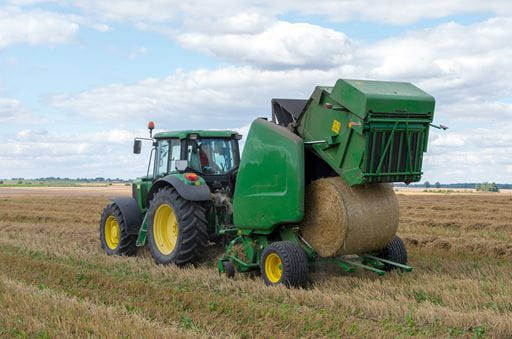Released on June 29, 2023
The majority of the province has continued to be dry, however some areas received heavy rain showers this past week with some isolated flash floods. Some of these areas also received hail; the size and amount of hail varied between storms and damage varied. While moisture was needed, a slow, soaking rain would have allowed crops and soils to absorb the moisture at an acceptable rate.
Pastures also needed the rain after a couple weeks of high day time temperatures and very little precipitation. Producers are watching their pasture grass and water situation very closely. The rain and humidity caused a slight delay to the haying season for some, but initial reports indicate hay quality to be in the good to excellent range.
Crop development has quickened across the province after another week of hot, dry weather with only isolated precipitation. Provincially, 30 per cent of the fall cereals, 22 per cent of the spring cereals, 22 per cent of the oilseed crops and 19 per cent of the pulse crops are ahead of normal development for this time of year. A general rain and mild temperatures are needed to avoid continued rapid maturation. Crops in the west central region, where conditions remain very dry are the most advanced while the east central region has most crops rated as normal. Crop condition varies widely across the province ranging from poor to excellent condition.

Producers note a wide range of precipitation across their rural municipalities, ranging from five mm to 75 mm in the most severe downpours. Some of the weekly precipitation recorded amounts ranged from three mm in the Netherhill area to 50 mm in the Bienfait and Wadena areas. Those who haven't received significant rain this season are hoping they receive moisture soon as crops begin to deteriorate from the dry, hot growing conditions.
The isolated rain did little to maintain or improve the provincial topsoil moisture ratings, while they may have had an effect at the regional level. The topsoil moisture rating for cropland is one per cent surplus, 53 per cent adequate, 34 per cent short and twelve per cent very short. Hay and pasture land topsoil moisture is rated as one per cent surplus, 41 per cent adequate, 37 per cent short and 21 per cent very short.
Haying operations are just starting in the province. Livestock producers who haven't had adequate rainfall are reporting their hay crop is less than average for yield but the quality is rated good to excellent. Hay quality is currently rated as 20 per cent excellent, 63 per cent good, 13 per cent fair and four per cent poor.
The majority of crop damage this past week was from heat, dry winds, drought, grasshoppers, gophers, flooding and hail. Gophers have become a serious problem in many municipalities across the province, with some producers stating that they have lost large portions of their fields to the rodents. Those who have been negatively impacted by flooding and hail are still assessing whether their crops will bounce back.
Producers are busy trying to control disease in their fields by spraying their first round of fungicide on crops such as lentils and spring wheat, and continuing with herbicide and insecticide applications to manage weeds and insects..
For many producers, this is still a stressful time of year and they are reminded to take all safety precautions in all the work they do. The Farm Stress Line can help by providing support for producers toll free at 1-800-667-4442.
A complete, printable version of the Crop Report is available online at https://www.saskatchewan.ca/crop-report.
Follow the 2023 Crop Report on Twitter at @SKAgriculture.
-30-
For more information, contact:
Agriculture
Moose Jaw
Phone: 306-694-3714
Email: matt.struthers@gov.sk.ca
Cell: 306-630-8865

